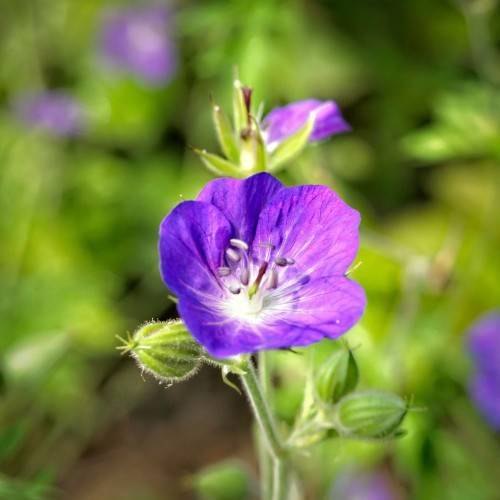
bloody cranesbill
Geranium sanguineum 'New Hampshire Purple'
Cycle:
Herbaceous Perennial
Watering:
Average
Hardiness Zone:
3 - 9
Flowers:
Flowers In Summer
Sun:
Full sun, Part sun/part shade
Fruits:
Fruits In Summer Ready In
Leaf:
Yes
Growth Rate:
High
Maintenance:
Low
Drought Tolerant:
Yes
Care Level:
Medium
watering
Water your Bloody Cranesbill (Geranium sanguineum 'New Hampshire Purple') once a week, allowing the soil to dry out slightly between waterings. Aim to water using an overhead sprinkling method to keep the leaves dry. Water slowly and deeply directly onto the soil, ensuring it is well saturated, but don't flood the plant. During drought or very hot weather water more frequently, up to twice a week. Be sure not to overwater, as too much moisture could suffocate the roots.
sunlight
Bloody cranesbill (Geranium sanguineum 'New Hampshire Purple') is a shade-tolerant plant and does best when exposed to partial sunlight. It should receive around 4 to 6 hours of direct sunlight per day, but no more than 8 hours. It should be placed in a location that is not too hot, or the foliage may scorch. It is best to provide fresh morning sunlight to maximize blooms and growth, and to protect the plant from the intense afternoon sun.
pruning
The best time to prune bloody cranesbill (Geranium sanguineum 'New Hampshire Purple') is in late winter or early spring. Pruning in mid-to-late summer can stimulate more growth, but this is not ideal and can leave the plant weak and vulnerable to disease. The amount of pruning needed will depend on the size and age of the plant. Shoots should be pruned back to a healthy bud if the plant is getting too big or overgrown. Dead or faded blooms should be removed to encourage new flowering. If the overall plant is starting to look lanky or untidy, you can give it a light trim all over. This will encourage density and prevent the plant from getting too leggy. Never cut more than 1/3 of the mature plant or you risk weakening or damaging the plant.
